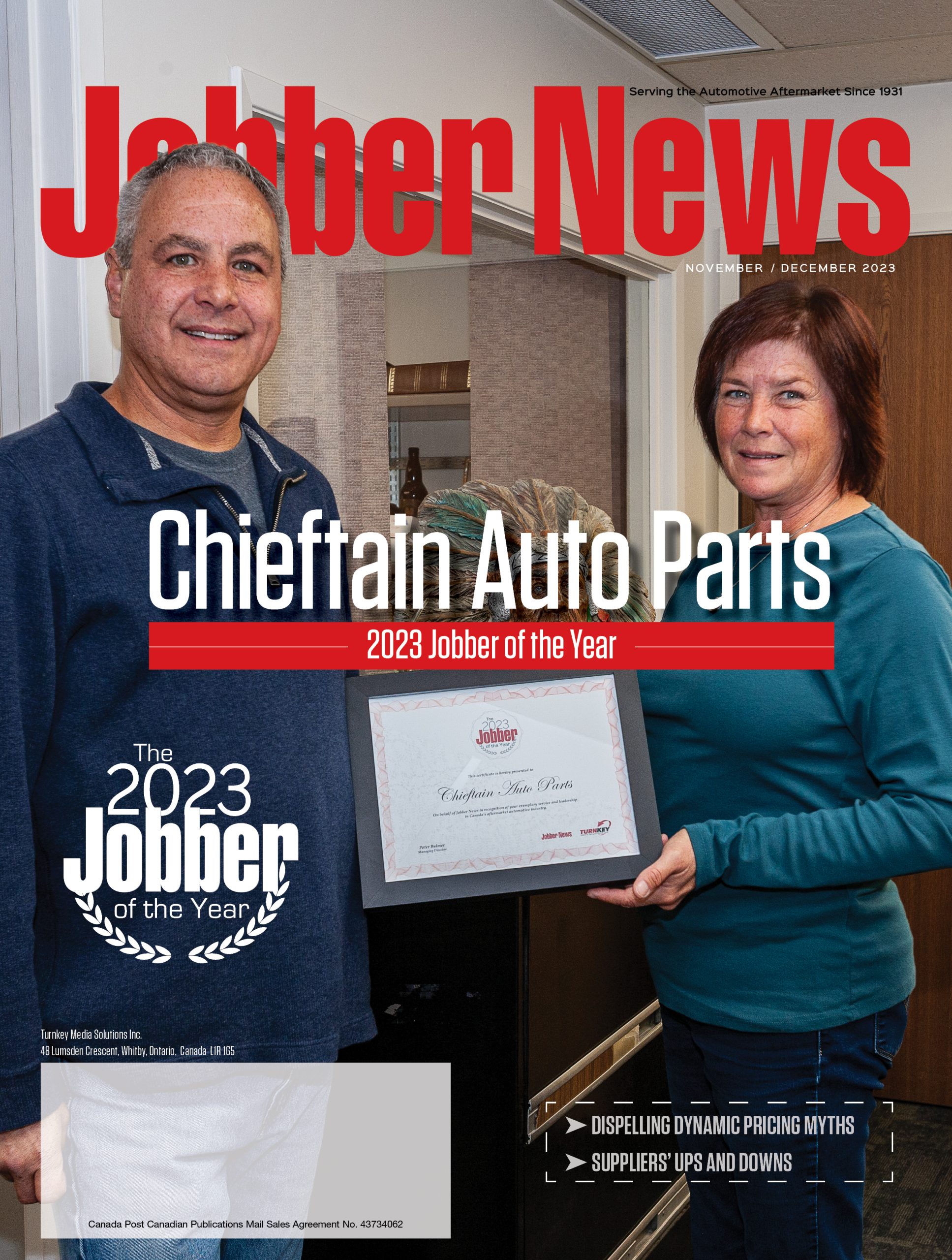
Air Springs doesn’t have to be a dealership job!
By Doug Taylor
More and more luxury cars, SUVs, and trucks come with standard or optional air suspension these days.
It’s unfortunate, then, that a lot of aftermarket shops consider this kind of work to be out of their wheelhouse.
Whether they’re just unfamiliar with the technology or they just don’t see a lot of this kind of work, they seem only too happy to send it to a dealership for repair or service.
But air suspension work is going to become even more common, as carmakers rely more heavily on a technology that can offer their customers superior ride quality, increased safety, and load-leveling capability.
According to consulting firm Markets & Markets, the air suspension market is projected to reach $8.4 billion by 2025.
Clearly there’s an opportunity for independent repair shops to profit from air suspension work, rather than sending it away.
With problem-solving
engineering, some
aftermarket options
can actually be
easier to install
than the OE parts.
This is especially true given that the first time an air strut needs replacing is typically just after the vehicle’s warranty has ended. With vehicles now lasting over 10 years, most vehicles with air springs may need them replaced two or three times in their lifetime. Depending on driving style, road conditions, climate, and the type of vehicle, air suspension components may start to wear out at around 120,000 kilometers or sooner.
Servicing air suspension systems can be easier than many shops and technicians realize. If a technician can service brakes or traditional suspension systems, they already have the skill set needed to repair air suspensions. And with problem-solving engineering, some aftermarket options, like the rear air springs for Mercedes-Benz W211 E-class, can actually be easier to install than the OE parts, giving even more opportunity for shop profit.
Because air suspension units can experience failures in multiple areas, accurately diagnosing problems can be the first point of profit for shops. Included below is a list of air suspension inspection basics that can serve as a useful guide for repair shops looking to take on this lucrative diagnostic work.
* A shop should inspect the vehicle’s air springs and air struts with every visit after about 100,000 km. Excessive oil leaking from the shock portion of the strut may indicate a failing damper. Shops should be aware that uneven tire wear may not only indicate an alignment issue, but may be from an air suspension problem.
* Technicians should look for tiny cracks on the air spring, particularly around where the bag folds upon itself. If these cracks are developing, the soap and water spray test should be used. A mixture of a tablespoon of dish soap to one quart of water, sprayed from an all-purpose spray bottle, can be used for detecting a leak by looking for emerging bubbles.
* A clean rubber air spring will extend the life of the bladder. After spraying it to test the air spring, it should be cleaner since the soapy water solution may loosen and help rinse away debris, road grime and oils. Hosing off the soap will help complete this cleaning. Technicians should look for rub marks on the air spring or on any visible air lines. Rubbing may come from aggressive driving, driving over rough terrain, or if parts – including airlines and airline fasteners – are loose.
* If possible, the air suspension compressor’s dryer should be replaced each time an air spring is replaced. A leaking air spring may allow moisture to enter the system, causing damage to the system. A leaking air spring may also cause the compressor to overwork and eventually burn out. And if the vehicle comes in with a dashboard suspension warning light, or the compressor is not operating, the technician should check the air suspension fuses and compressor relay.
* When replacing a non-operative compressor, it’s vital that the technician perform the soapy water test to look for the leak that caused the original problem. Most commonly, the leak is on the air spring, but it could also be from a loose or failing airline fitting on the spring or strut, valve block, air tank reservoir or compressor. You’ll also want to make sure you replace the air suspension compressor relay.
If air suspension failure is detected, replacing the leaking air spring (if possible) or the entire strut with a remanufactured unit will restore original OE damping and auto leveling functionality of a vehicle with active damping.
Shops can also now replace a leaking air strut with a new passive aftermarket part which provides auto leveling and excellent ride comfort, but does not require any core handling.
Otherwise, shops can recommend installing a coil spring conversion kit – abandoning air suspension all together.
Conversion kits can provide an aging vehicle with additional years of trouble-free suspension use because it replaces the aging air suspension’s air springs with coil steel springs and the older worn shocks with new custom-valved shocks designed to work with the steel springs.
Determining repair options for customers largely depends on the customer’s budget, the age and mileage of the vehicle, whether or not the customer uses their semi-active dampers and whether or not the vehicle has true active damping. Reviewing these points with customers will enable shops to make the best recommendations.
The bottom line, though, is that replacing air springs is not a job only for OE technicians at dealer service departments. Independent shops can get in on this profitable work with a minimum investment in tools and training.
 Doug Taylor is product marketing manager for Arnott Inc. He can be reached at doug.taylor@arnottinc.com
Doug Taylor is product marketing manager for Arnott Inc. He can be reached at doug.taylor@arnottinc.com
 We want to hear what you think. Leave your comments below, or check out our Facebook page
We want to hear what you think. Leave your comments below, or check out our Facebook page
.png)





